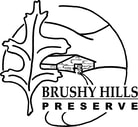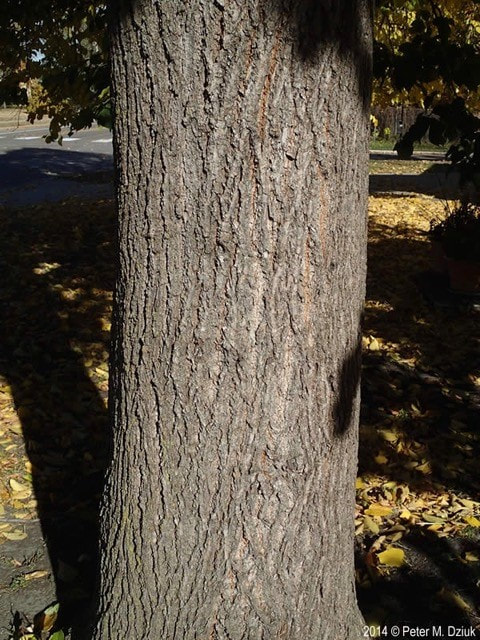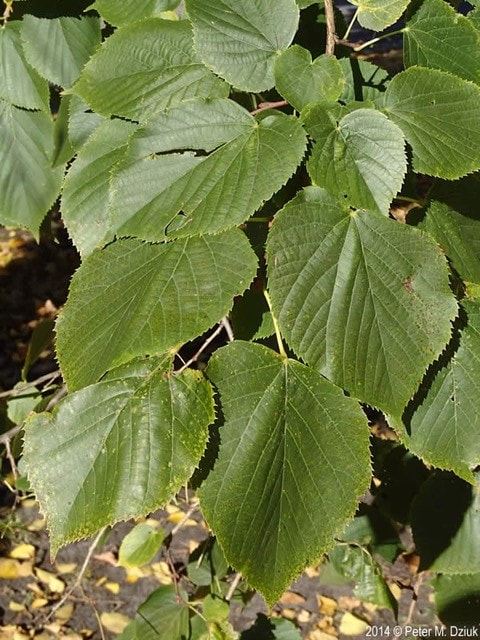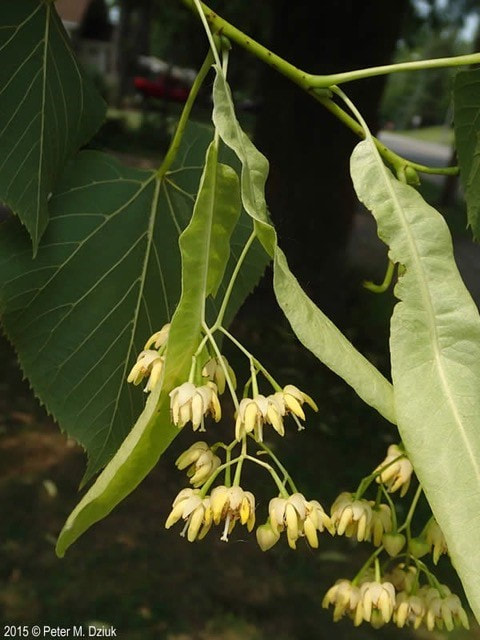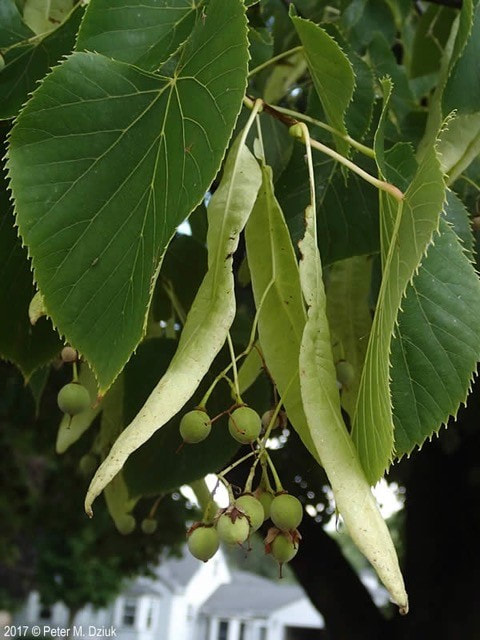American Basswood
Scientific Name: Tilia americana
— pronounced TIL-ee-uh a-mer-ih-KAY-nah
— Tilia, Latin for linden tree.
Mallow Family (Malvaceae): over 4,000 species, including hollyhock, hibiscus, cotton, okra, cacao tree
Other Common Names: American Linden
— pronounced TIL-ee-uh a-mer-ih-KAY-nah
— Tilia, Latin for linden tree.
Mallow Family (Malvaceae): over 4,000 species, including hollyhock, hibiscus, cotton, okra, cacao tree
Other Common Names: American Linden
all photos by Peter Dziuk at minnesotawildflowers.info
Young American Basswoods have smooth grey-green bark; adult trees, gray-brown with long, shallow furrows.
The leaves are arranged alternately. They are heart-shaped, with an unequal base and serrated margins.
The flowers are fragrant and creamy yellow, in clusters suspended from a long leafy "wing," blooming in late spring.
The fruit is a round nut-like berry, 1/4 to 1/3 inch in diameter, usually containing just one seed. At maturity it is covered with grayish-brown wooly hairs.
The leaves are arranged alternately. They are heart-shaped, with an unequal base and serrated margins.
The flowers are fragrant and creamy yellow, in clusters suspended from a long leafy "wing," blooming in late spring.
The fruit is a round nut-like berry, 1/4 to 1/3 inch in diameter, usually containing just one seed. At maturity it is covered with grayish-brown wooly hairs.
flowers and developing fruit
Photos and more ID help: VA Tech dendrology sheet
Interesting Facts:
Interesting Facts:
- American Basswood grows up to 80 feet tall and two to three feet in diameter. At about 15 years of age, a Basswood tree starts producing its seeds, which are a good food source for small mammals and birds.
- Typically, Basswoods live about 100 years, but some live 140 to 200 years.
- According to Lee E. Frelich, Basswoods are susceptible to invasion by fungi, which hollow out the trunk until the it buckles and collapses; this is the common cause of death for the "above-ground" tree. The stump then produces sprouts that grow quickly to adulthood, and the cycle may repeat; so it’s possible that a genetically-defined "individual" Basswood may live for centuries.
- Meantime the decaying wood in the standing tree welcomes cavity-nesting animals, including wood duck, pileated woodpecker, and numerous smaller birds and small mammals.
- Basswood flowers are pollinated by as many as 60 species of insects, including bees and flies in the daytime and moths at night.
